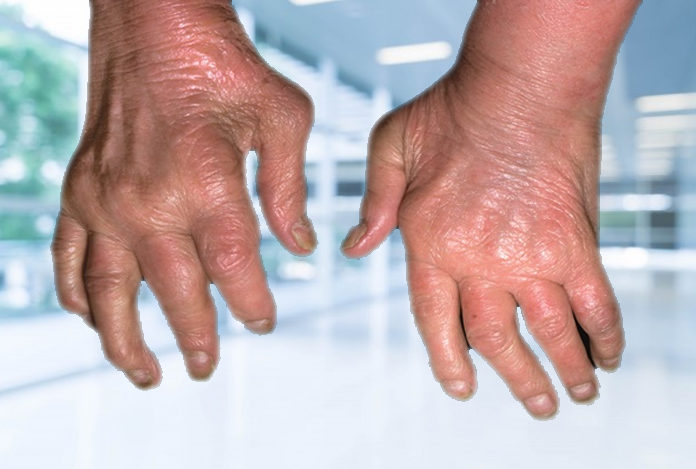
Overview and Facts
Psoriatic arthritis is an autoimmune, chronic and long-lasting disease. It is a type of inflammatory arthritis which affects around 30% of people suffering from psoriasis. Arthritis is chronic inflammation of joints that causes redness, warmth, pain and swelling in the joints. Whereas, psoriasis is a skin disease characterized by red, itchy and scaly patches on the skin. According to the National Psoriatic Foundation, around 10% to 30% of people suffering from psoriasis develop psoriatic arthritis. Generally, people develop psoriasis first and are eventually diagnosed with psoriatic arthritis. In some cases, the problems in joints might begin earlier than the skin lesions. Both arthritis and psoriasis are autoimmune diseases, where the body’s immune system mistakenly starts attacking its own joints and skin respectively. Psoriatic arthritis is also an autoimmune disease which causes inflammation in joints and in the skin.
Psoriatic arthritis (PsA) can develop at any age but is most common in people aged between 30 and 50 years. Men have a slightly higher risk of developing psoriatic arthritis than women.
The common symptoms of psoriatic arthritis are joint pain, swelling and stiffness. Several psoriasis symptoms such as scaly skin patches and nail pitting are also visible. These symptoms may vary from mild to severe. Psoriatic arthritis can also affect any other body parts including spine and fingertips. There is still no cure for this condition. The treatment can, however, control the symptoms and prevent further damage in the joints. Psoriasis and psoriatic arthritis are together referred as psoriatic disease.
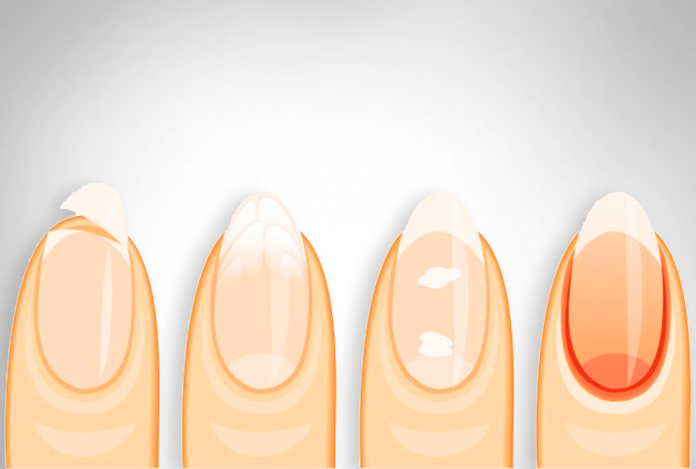
A recent analysis by the Centers for Disease Control and Prevention’s National Health and Nutrition Examination Survey (NHANES) reveals that around 6.7 million adults in U.S. have psoriasis. According to the National Centre for Biotechnology Information (NCBI), there are around 520,000 psoriatic arthritis patients in the U.S.
Types and Symptoms of Psoriatic Arthritis
Types of Psoriatic Arthritis:
There are five types of psoriatic arthritis. These are:
- Symmetric Psoriatic Arthritis: It affects same joints on both sides of the body. Symptoms can be similar to that of rheumatoid arthritis (RA). Symmetric psoriatic arthritis causes less deformity and is milder than the RA. Around 50% of the people suffering from psoriatic arthritis have this type. However, this can be disabling.
- Asymmetric Psoriatic Arthritis: It affects joint(s) on only one side of the body. This type of psoriatic arthritis is very mild. Only about 35% of people with PsA have asymmetric psoriatic arthritis.
- Distal Interphalangeal (DIP) Joint Predominant Psoriatic Arthritis: It is a rare type of psoriatic arthritis and is also known as DIP psoriatic arthritis. It mostly affects men. The joints close to the nails are affected, which are known as distal joints. It is often mistaken for osteoarthritis (OA). This type of psoriatic arthritis occurs only in 10 % of PsA patients.
- Spondylitis Psoriatic Arthritis: This type of psoriatic arthritis involves the spine. The patient’s lower back, neck and sacroiliac joints get inflamed and stiff. It makes daily movement very painful. Tendons and ligaments attached to the spine might also develop inflammation.
- Arthritis Mutilans: It is a severe, disabling and deforming type of psoriatic arthritis. Arthritis mutilans affects only 5% of the people suffering from psoriatic arthritis. It is linked to lower back and neck pain. With time, it seriously deforms small bones in hands and feet, especially fingers.
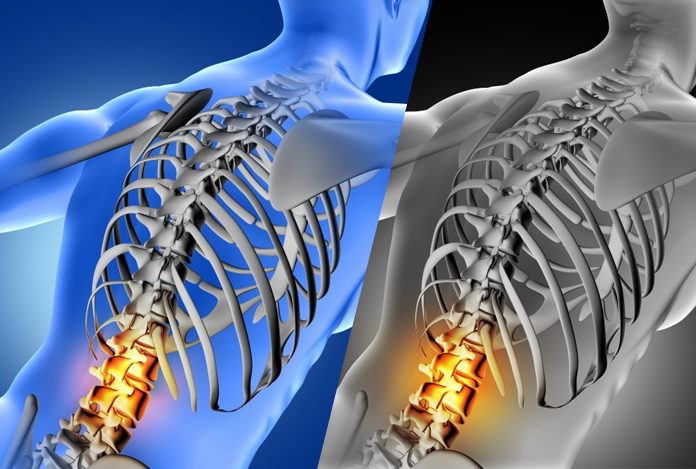
Symptoms of Psoriatic Arthritis:
The symptoms of psoriatic arthritis can vary from person to person. They might range from mild to severe. The symptoms might get worse at times and may also subside during the remission period. They largely depend on the type of psoriatic arthritis (PsA) a person is suffering from.
The general symptoms of PsA are:
- Morning stiffness for about half an hour
- Tender or swollen joints on both or one side of the body
- Toes and fingers that are swelled like sausages
- Painful muscles and tendons
- Scaly skin patches that might get worse during a flare-up
- Tiredness and fatigue
- Nail pitting or discoloration
- Separation of the nails from their nail bed
- Conjunctivitis or pink eye
- Uveitis or inflammation in the eye leading to pain
Spondylitis PsA might have the following symptoms in particular:
- Stiffness and pain in spine
- Swelling and pain in knees, feet, ankles, wrists, hands and other joints
- Swollen fingers or toes
Symmetric PsA affects five or more joints on both sides of the body. Asymmetric PsA affects joints on only one side of the body. Arthritis mutilans shortens the affected toes or fingers. DIP psoriatic arthritis causes swelling and pain in the distal joints.
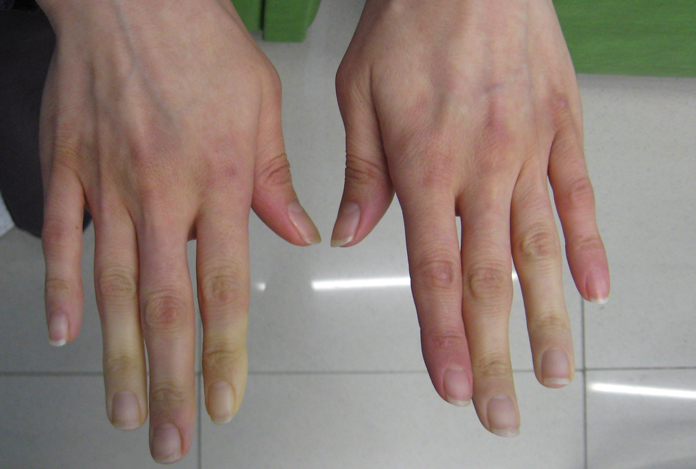
Risk Factors of Psoriatic Arthritis
There are several risk factors of psoriatic arthritis:
- Psoriasis: A person suffering from psoriasis is at the highest risk of developing psoriatic arthritis. Patients who have lesions in their nails generally have higher risk than others.
- Genetics: Having a close family member with psoriatic arthritis, increases the risk of other family members to be diagnosed with psoriatic arthritis.
- Gender: Spondylitis and DIP psoriatic arthritis occur majorly in males. However, symmetric arthritis is more frequent in females rather than in males.
- Age: Psoriatic arthritis can develop at any age but people between 30 to 50 years of age are at highest risk of developing the disease.
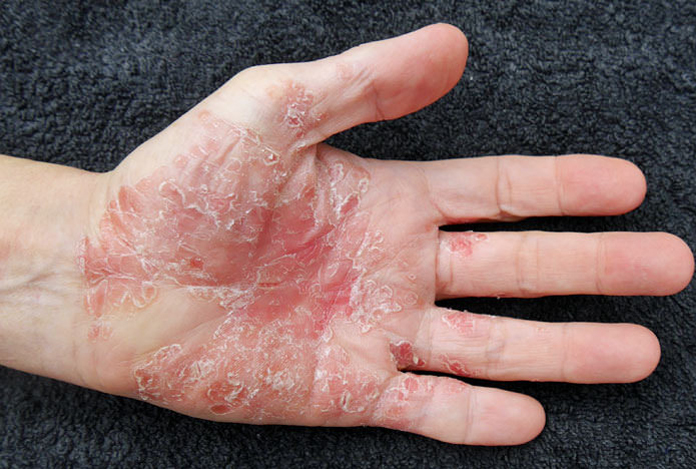
Do I have Psoriatic Arthritis?
If you are suffering from persistent stiffness, swelling and pain in the joints, morning stiffness, pain in movement, it might indicate having common knee pain, arthritis or Paget’s disease. However, pitting of nails, separation of nails from nail beds and skin lesions or rashes might indicate some kind of fungal infection, skin allergy or psoriasis. Having skin lesions and inflammation of joints together might indicate psoriatic arthritis. People suffering from psoriatic arthritis often go undiagnosed, so it is better to see a doctor immediately. If left untreated, PsA can cause severe joint damage and might lead to disability.
Causes and Prevention of Psoriatic Arthritis
Causes of Psoriatic Arthritis:
The exact cause of psoriatic arthritis is not known. However, PsA is combined effect of immune system and genetic and environmental factors.
1. Genetics: Scientists have identified several genes that are linked with the development of psoriatic arthritis. People with spondylitis have a genetic marker called HLA-B27 present. Blood tests can reveal if a person has this gene marker present or not.
2. Changes in Immune System: Certain changes in the immune system have an important role in development of PsA. AIDS patients generally have lower number of T cells. A significant decline in T cells increases the risk of developing psoriatic arthritis in people who are already suffering with psoriasis.
3. Environmental Factors: Certain infections and environmental factors are linked to psoriatic arthritis development. These triggers include:
- Infections such as strep throat
- Injuries such as a scrape, cut or sunburn
- Stress
- Being obese or overweight
- Pollution or exposure to certain chemicals
- Cold weather
- Smoking
- Excessive drinking
- Medicines such as beta-blockers and antimalarial drugs
4. Tumor Necrosis Factor (TNF): It is a type of protein that plays an important role in developing psoriatic arthritis. TNF causes inflammation in rheumatoid arthritis. People who are suffering from psoriatic arthritis have high levels of TNF.
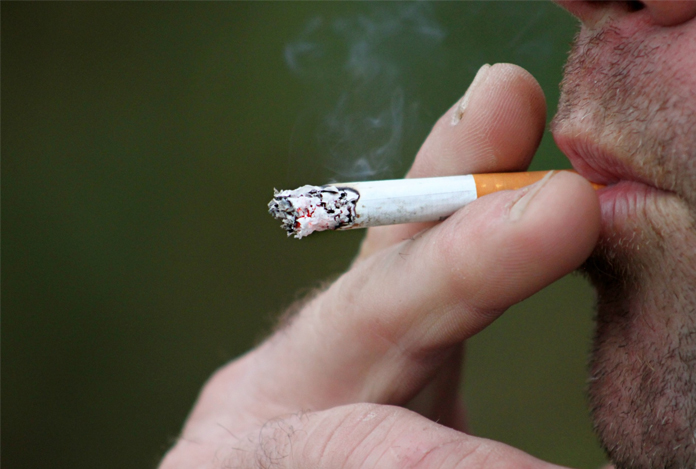
Prevention of Psoriatic Arthritis:
Psoriatic arthritis cannot be prevented. However, changing lifestyle and leading a healthy life might prevent the symptoms from becoming worse.
- Avoid PsA Triggers: Avoid the triggers that initiate the psoriatic arthritis symptoms. This can be done easily by maintaining a journal and noting down triggers to be avoided.
- Lose Weight: Maintaining a healthy weight ensures that the risk of developing psoriatic arthritis is decreased.
- Have a Healthy Diet: Consuming a healthy diet is the key to prevent the psoriatic arthritis. Eat at regular intervals and increase intake of whole foods, vegetables, fruits, etc.
- Get Physically Active: Indulge in any kind of physical activity for around 30 minutes a day. This would help in preventing joint stiffness due to inactivity and would help in calming the body.
- Go for an Early Screening or Prognosis: If you have a close family member suffering from psoriatic arthritis or you are having psoriasis, you must consult a doctor to diagnose psoriatic arthritis. It can go undetected at times and might cause severe joint deformities before being diagnosed.

Diagnosis and Tests for Psoriatic Arthritis
The diagnosis of psoriatic arthritis involves a physical examination and certain tests to determine PsA. During the physical examination, the doctor may:
- Check fingernails for flaking, pitting and other abnormalities
- Closely examine the joints for any stiffness, tenderness or swelling
- Press the soles of feet to feel any tenderness around
To further help confirm a diagnosis, a doctor or rheumatologist might also conduct the following tests:
- Blood tests to measure the inflammation in the body by checking C-reactive protein (CRP) level and Erythrocyte sedimentation rate (ESR)
- Complete blood count, electrolyte test, kidney function and liver function tests
- X-ray and MRI tests for the affected joints. Ultrasound and MRI can detect any inflammation in the joints much before X-rays can.
- Check the presence of anti-cyclic citrullinated peptide (anti-CCP) antibodies and rheumatoid factor (RF). This helps in the diagnosis of rheumatoid arthritis rather than PsA.
- Check for antinuclear antibodies (ANAs) which are often present in people having psoriatic arthritis.
- Conduct a joint fluid test by aspirating a sample of fluid from the inflamed joint (mostly knee) by inserting a fine needle. If there is presence of uric acid crystals in the fluid, it might indicate gout rather than PsA.

Treatment and Care of Psoriatic Arthritis
Treatment of Psoriatic Arthritis:
The treatment for psoriatic arthritis aims at preventing further joint damage and disability. It also helps in improving the movement and flexibility of a person suffering from psoriatic arthritis.
The treatments for psoriatic arthritis are:
1. Medications: The medications that are used to treat psoriatic arthritis include:
- Nonsteroidal anti-inflammatory drugs (NSAIDs): The NSAIDs can reduce inflammation and relieve pain. These are available both on prescription and over-the-counter. The stronger NSAIDs are available only on prescription whereas naproxen sodium (Aleve) and ibuprofen (Advil, Motrin IB, others) are OTC drugs. Side-effects may include heart problems, stomach irritation, liver and kidney damage.
- Disease-modifying antirheumatic drugs (DMARDs): These drugs slow down the progression of psoriatic arthritis and helps in preventing further joint damage. Common DMARDs include leflunomide (Arava), methotrexate (Trexall) and sulfasalazine (Azulfidine). Side effects of DMARDs include bone marrow suppression, liver damage and severe lung infections.
- Immunosuppressants: These drugs suppress the immune system, which is rather out-of-control during psoriatic arthritis. Some common immunosuppressants are cyclosporine (Gengraf, Sandimmune, Neoral) and azathioprine (Azasan, Imuran). These drugs might increase a person’s susceptibility to infections.
- TNF-alpha inhibitors: Tumor Necrosis Factor-alpha is an inflammatory substance produced by the body. These inhibitors can help in reducing morning stiffness, pain, swelling and tenderness in the joints. Examples of TNF- alpha inhibitors are infliximab (Remicade), etanercept (Enbrel), certolizumab (Cimzia), golimumab (Simponi) and adalimumab (Humira).
- Newer medications: Certain newly developed medications for psoriasis can provide relief in case of psoriatic arthritis also. These newer drugs include secukinumab (Cosentyx), ustekinumab (Stelara) and apremilast (Otezla).
- Topical treatments: Certain lotion, ointment, gel and creams can help in relieving the itching in the skin lesions. Some common topical drugs are salicyclic acid, calcitriol, tazarotene and anthralin.
2. Surgical and other Procedures: These procedures are used if the person does not respond to the medications or there is severe joint damage causing disability.
- Steroid injections: Corticosteroids can reduce the inflammation in the joints. They are injected into an infected joint. One common steroid is prednisone. Side-effects include slight susceptibility to infection and pain.
- Joint replacement surgery: This is an option for people who have severely damaged joints and it has started affecting their movement. Joint replacement surgery can reduce the pain and restore the movement. This involves replacing damaged joints with metal and plastic. Knee replacements are most common.
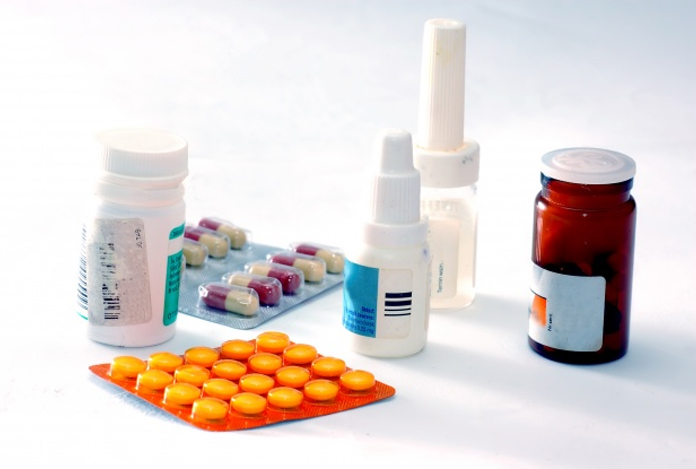
Care for Psoriatic Arthritis:
- Use assistive devices, tools and gadgets if required, to reduce the stress on the joints
- Use physical techniques which help in keeping pain away during regular daily exercises.
- Maintain proper balance between work and rest. Sleep for at least seven hours a day as it allows body to heal.
- Take the medications at proper time, as prescribed by the doctor. Apply topical creams and lotions over the skin rashes to reduce itching.
- Have a healthy psoriatic arthritis diet such as vegetables, fruits, whole grains and nuts.
- Reducing stress levels by regular rest periods, meditation techniques, relaxation exercises exercise programs and participating in various support groups.
- Maintain a journal and note down the triggers. This can help in preventing future flare-up.
- Ask friends and family for extra support during flare-up.
- Indulge in any kind of physical activity for at least 30 minutes in a day.
- Keep your fingernails short to avoid scratching the skin lesions.

OTC and Self-Management Methods Available for Psoriatic Arthritis
OTC Medicines for Psoriatic Arthritis:
There are several OTC medications and topical drugs available for psoriatic arthritis. Some popular NSAIDs such as naproxen sodium (Aleve) and ibuprofen (Advil, Motrin IB, others) are OTC medications. Topical medications are available in form of gels, sprays, lotions and creams. Coal tar, salicylic acid and calamine are OTC that help in relieving the itching in the skin lesions.
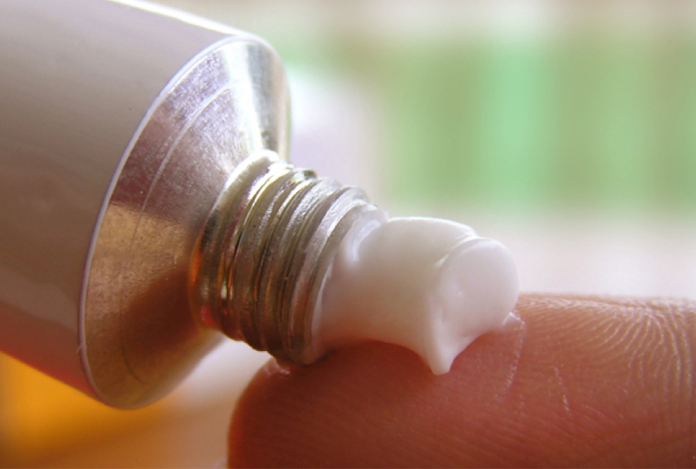
Self-Management Methods for Psoriatic Arthritis:
The self-management methods help a psoriatic arthritis patient to manage the symptoms. These also help in reducing the pain and inflammation.
- Consume anti-inflammatory diet and eat healthy foods: Increase intake of foods that are rich in antioxidants such as spinach, kidney beans, berries, etc. These can help in reducing the joint inflammation. Fish, fruits, whole grains, olive oil and vegetables are all vital for the management of psoriatic arthritis. Drink around eight to ten glasses of water a day. Avoid foods containing bad carbohydrates and refined sugar such as pasta and white bread.
- Indulge in physical activity: Swimming, low impact aerobics and light cardio exercises can help in psoriatic arthritis management. A physical therapist can help in forming custom exercise routine for a psoriatic arthritis patient.
- Protect your joints: Change the way you do regular activities, this might help in changing the way you feel. For example, lift heavy objects with both hands, use jar openers to open the jar lids, open a door by applying your whole-body weight and not by using fingers.
- Balancing rest and work: Maintaining a proper balance between rest and work ensures that joint inflammation is under control. Taking several small breaks throughout the whole day helps in easing pain caused by psoriatic arthritis.
- Hot and cold compresses: Certain heat treatments such as hot water baths and heat pads might reduce the stiffness of the joints. Ice packs help in numbing the inflamed area and reduce the inflammation.
- Have a positive attitude: Maintaining an optimistic outlook throughout psoriatic arthritis helps fighting the disease and keeps a person motivated.
- Have a support system: Have a network of people to rely on such as family and friends who support in flares. Participate in a support group with similar problems. Connect with people who have been successfully living with psoriatic arthritis.
- Relieve stress: Meditate or practice yoga daily to relieve stress. This would help in preventing psoriatic arthritis flares due to stress and tension.
- Take control: Take all the necessary help from your rheumatologist or doctor to manage the psoriatic arthritis symptoms.
- Break bad habits: Try to quit smoking and also avoid second-hand smoke. Also, a person suffering from psoriatic arthritis must limit alcohol and caffeine.
- Pace yourself: Know when your body is exhausted and needs rest to cope up with further physical activity or work. Take several breaks throughout the day to keep body at ease.
- Take out time for yourself: Try to keep some time for yourself, take a walk, listen to music, meditate, relax, write or indulge in any other recreational hobby. It helps in unwinding from stress due to psoriatic arthritis.

Natural Ways to Cure Psoriatic Arthritis
There are several ways to cure psoriatic arthritis naturally. These are:
- Apple Cider Vinegar: Apply apple cider vinegar over the skin lesions on the scalp for relief. Avoid this if the lesions are scratched or bruised.
- Tea tree oil: This oil might reduce the inflammation due to psoriatic arthritis. It might also aggravate sensitive skin.
- Oats: Adding oats to the bath or applying its paste over the lesions provide relief. It works as an anti-itching agent.
- Turmeric: People suffering with psoriatic arthritis can consume turmeric by adding it in the meals or in form of capsules. Turmeric is highly regarded for its anti-inflammatory properties.
- Aloe vera: It must be applied topically over the skin rashes. It provides a cooling and soothing effect.
- Epsom salt: A warm bath using few tablespoons of epsom salt helps in reducing the joint inflammation and pain. Epsom salt is a rich source of magnesium and thereby helps in reducing the inflammation.
- Fish oil: It is believed that the omega-3 fatty acids present in fish oil help in reducing the inflammation and joint pain.
- Ginger: Ginger is known for its anti-inflammatory properties. Consuming ginger around three times a day can reduce the joint pains due to psoriatic arthritis.
There are also several alternative therapies that provide additional relief and improve quality of life in psoriatic arthritis patients. These therapies include:
- Tai chi: It is an old Chinese technique and a light movement therapy. It includes light exercises and simple stretches combined with deep breathing. Tai-chi helps in relieving the joint pain and stress related to psoriatic arthritis.
- Massage therapy: This therapy involves manipulating the different muscle groups by rubbing, pressing, kneading and patting. The massage therapists use oils for massage. Various types of massage include Swedish massage, sports massage and deep tissue massage.
- Relaxation techniques and meditation: These techniques help in reducing anxiety, stress and managing pain. They help in dealing with symptoms associated with psoriatic arthritis. The foundation of these relaxation techniques is deep breathing. The relaxation techniques are progressive muscle relaxation, visualization, and meditation.
- Acupuncture: It involves inserting thin needles in the skin at various points called meridians. These points are believed to be the points where the blockage of energy is happening. A person suffering from psoriatic arthritis must visit only a licensed practitioner. This helps in reducing symptoms related to the psoriatic arthritis.
- Acupressure: This technique releases the flow of energy and helps in releasing muscular tension in the affected joints. It involves mild to firm finger pressure at the areas called meridians. It also provides a soothing effect on the body.
- Hydrotherapy: It is also known as aqua therapy. A person is made to do simple exercises in a warm or cold pool of water. This helps in improving the movement and reduces the inflammation in the joints. A person can also practice the exercises taught during hydrotherapy sessions in a local swimming pool.

Health Tip by Expert
People suffering from psoriatic arthritis are at an increased risk of developing enthesitis. The condition enthesitis marks painful inflammation at the points where tendon attaches to the bone especially at heels, elbow and bottom of the feet. So, it is advised to do warm-up stretches before and after exercise.





